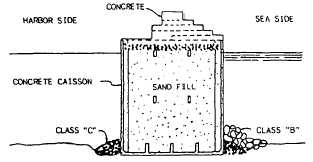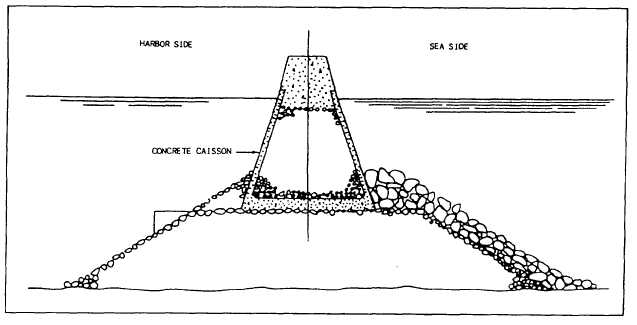OFFSHORE
Offshore structures include breakwaters and
jetties. They are alike in construction and differ
mainly in function.
Breakwaters and Jetties
In an offshore barrier, the breakwater interrupts
the action of the waves of open water to create an area
of calm water between it and the shore. A jetty works
to direct and confine a current or tidal flow into a
selected channel.
The simplest type of breakwater or jetty is the
rubble mound (also called rock mound). An example
is shown in figure 10-22. The width of its cap may vary
from 15 to 70 feet. The width of its base depends on
the width of the cap, height of the structure, and slope
of the inner and outer faces.
Figure 10-24.-Caisson breakwater/jetty.
Rubble-mound breakwaters or jetties are
constructed by dumping rock from either barges or
railcars (running on temporary pile-bent structures)
and by placing upper rock and cap rock with floating
cranes.
Figure 10-22.-Rubble-mound breakwater/jetty.
Figure 10-23.-Composite breakwater/jetty.
10-12







